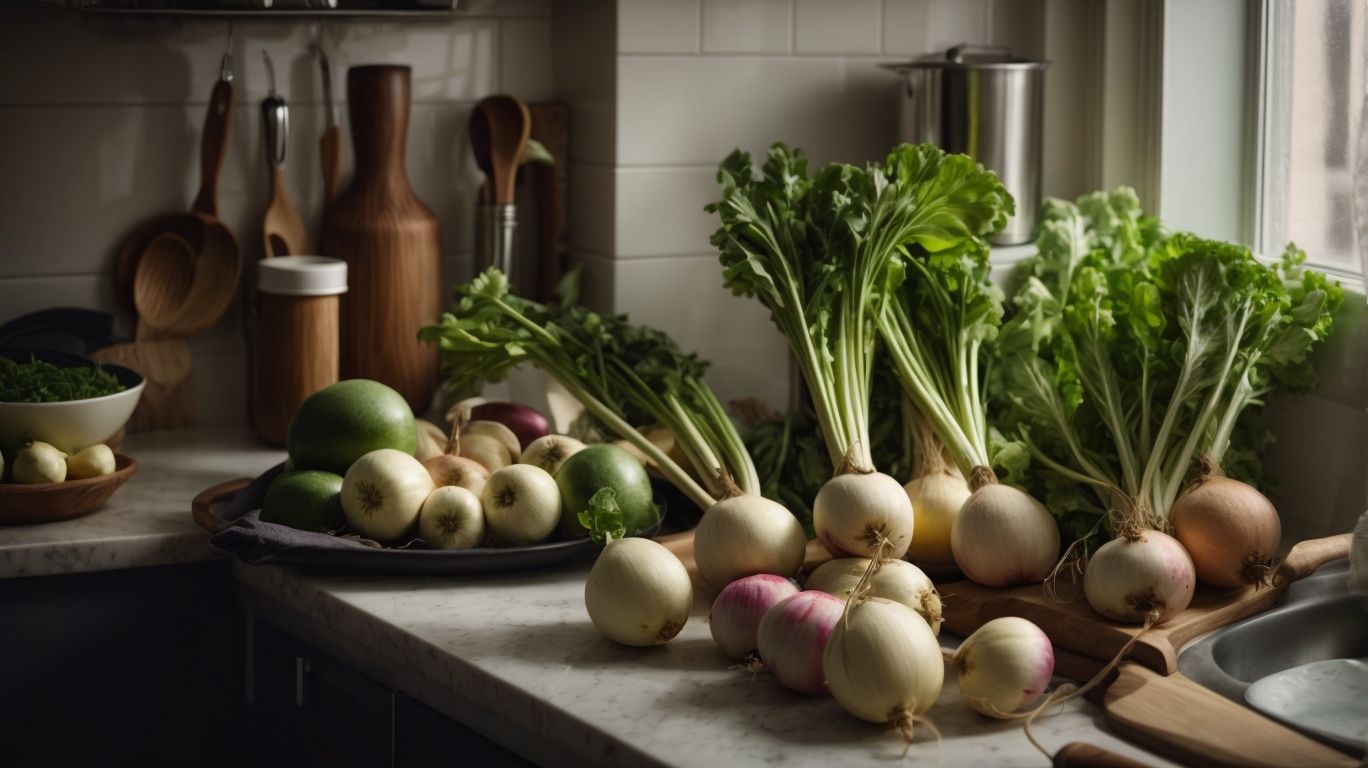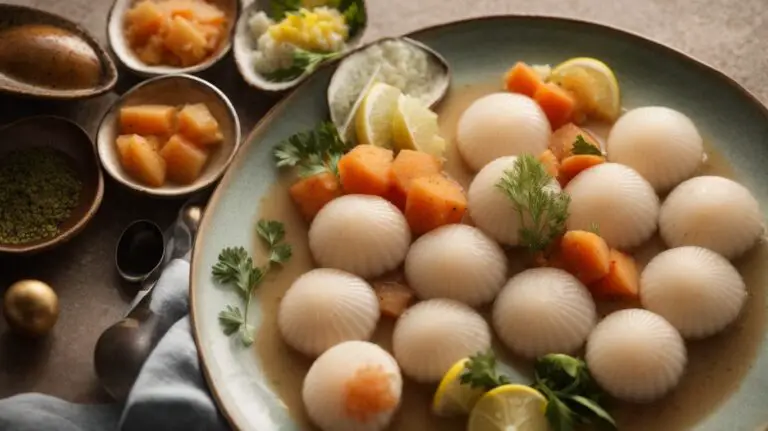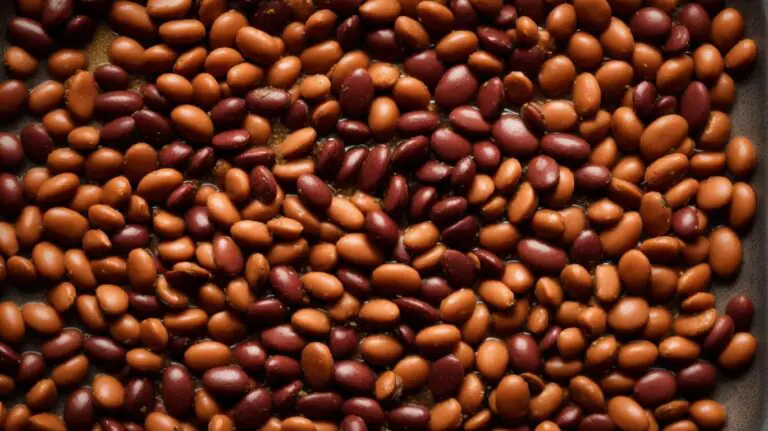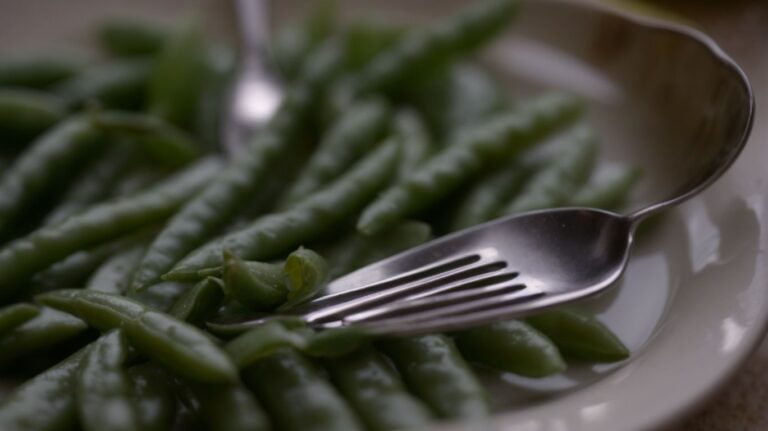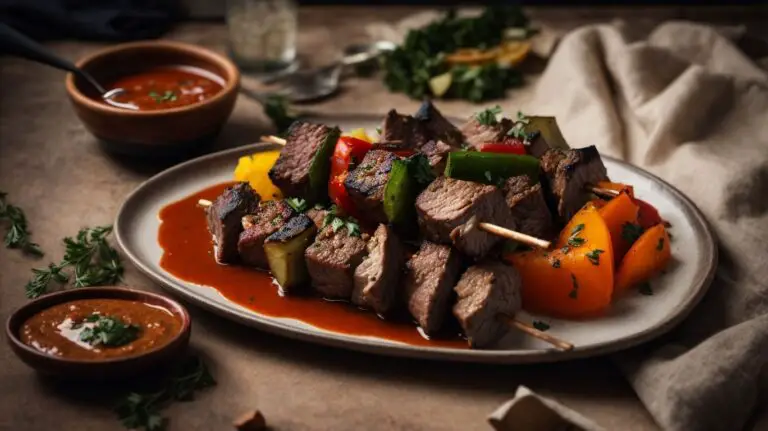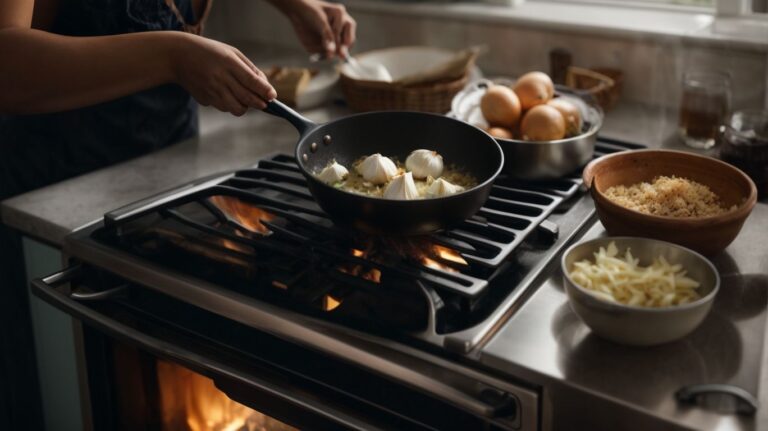How to Cook With Turnips?
Looking to add a new twist to your culinary creations?
Turnips are a versatile and nutritious vegetable that can elevate your dishes to the next level.
In this article, we will explore everything you need to know about turnips – from selecting and storing them to preparing and cooking them in various delicious ways.
Join Chris Poormet as they share tips, techniques, and mouthwatering recipes featuring this underrated root vegetable.
Let’s dive into the world of cooking with turnips!
Key Takeaways:
What Are Turnips?
Turnips are root vegetables known for their distinctive flavor and versatility in various culinary dishes.
These cruciferous veggies have a slightly peppery taste, often described as a blend of radish and cabbage, with a crisp texture when raw. As they are low in calories and high in fiber, turnips are a nutritious addition to your diet.
When cooked, turnips sweeten and soften, making them a great addition to soups, stews, and roasts. They are also commonly mashed or roasted to enhance their natural sweetness and earthy undertones.
Rich in vitamins and minerals, turnips are often used in pickling, fermenting, and as a side dish. Their versatility makes them a favorite in both traditional and modern cuisines around the world.
What Are the Different Types of Turnips?
Turnips come in a variety of types, including purple top, hakurei, and golden globe, each offering unique flavors and textures.
Among these, the purple top turnips are characterized by their vibrant purple coloring on top and creamy white bottoms, providing a slightly peppery taste ideal for roasting or adding a zesty touch to salads. On the other hand, Hakurei turnips, also known as salad turnips, are smaller with a delicate, sweet flavor that can be enjoyed raw in salads or lightly sautéed for a tender crunch. The golden globe turnips, with their golden skin and subtle earthy flavor, are perfect for mashing or roasting, bringing a savoriness to dishes.
Selecting and Storing Turnips
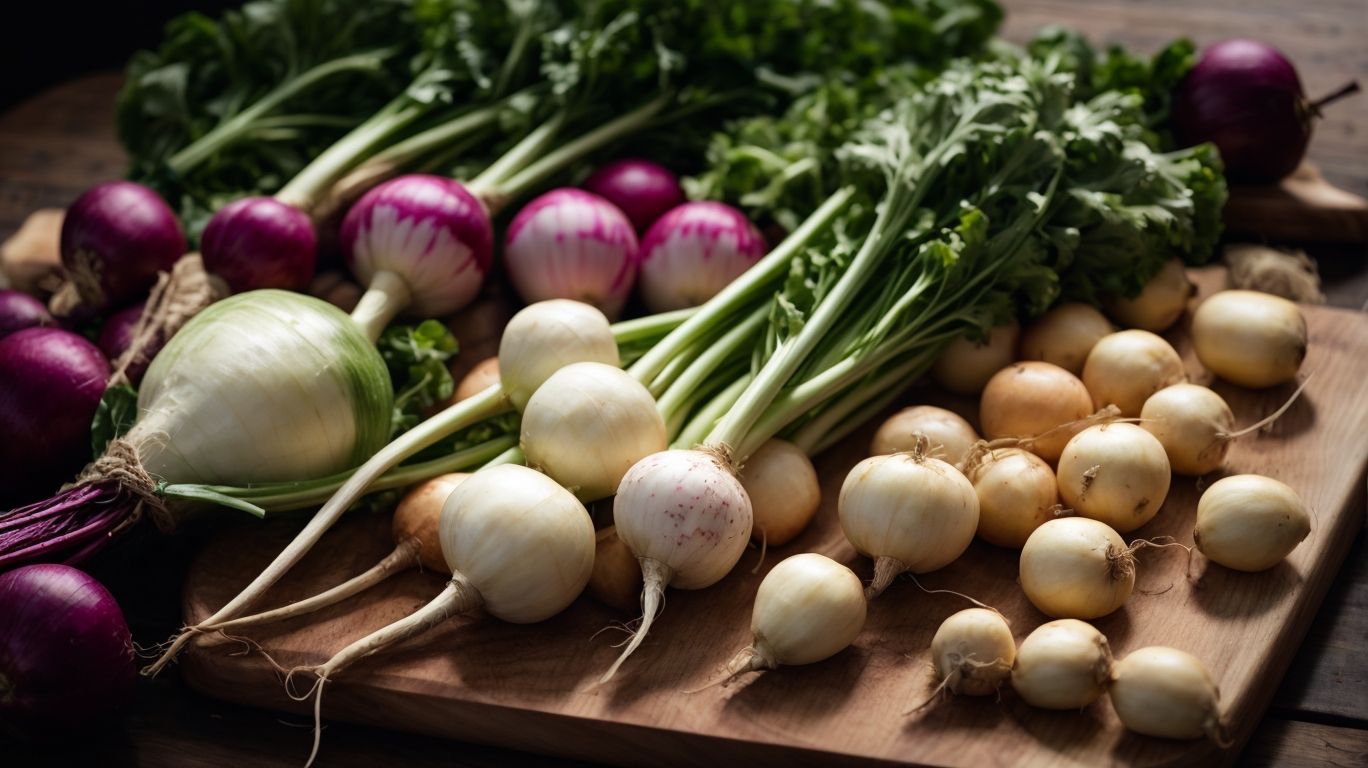
Credits: Poormet.Com – Kyle Taylor
Selecting and storing turnips properly is essential to maintain their freshness and flavor for optimal culinary results.
How to Choose the Best Turnips at the Store?
When choosing turnips at the store, look for firm roots with smooth skin and vibrant greens attached to ensure freshness and quality.
Give the turnip a gentle squeeze to assess its firmness and density; a good turnip should feel solid and heavy for its size, indicating juiciness and flavor.
Avoid turnips with soft spots, shriveled skin, or wilted greens, as these are signs of age and potential spoilage.
Opt for medium-sized turnips as they tend to be more tender and less woody in texture, making them ideal for various culinary uses such as salads, roasts, or stews.
How to Store Turnips for Optimal Freshness?
To maintain the freshness of turnips, store them in a cool, dark place with good ventilation, such as the refrigerator crisper drawer, and separate the greens from the roots to prevent wilting.
For optimal storage conditions, consider wrapping the turnips in a damp paper towel before placing them in a perforated plastic bag to retain moisture without causing them to become soggy. Humidity levels play a crucial role in preserving the firmness and flavor of turnips, so aim for a humidity level of around 95% in the storage area.
When handling turnips, ensure that they are free from any dirt or debris by gently brushing them or rinsing with water before storage. Avoid washing them until you are ready to use them to prevent mold growth and spoilage.
Preparing Turnips for Cooking
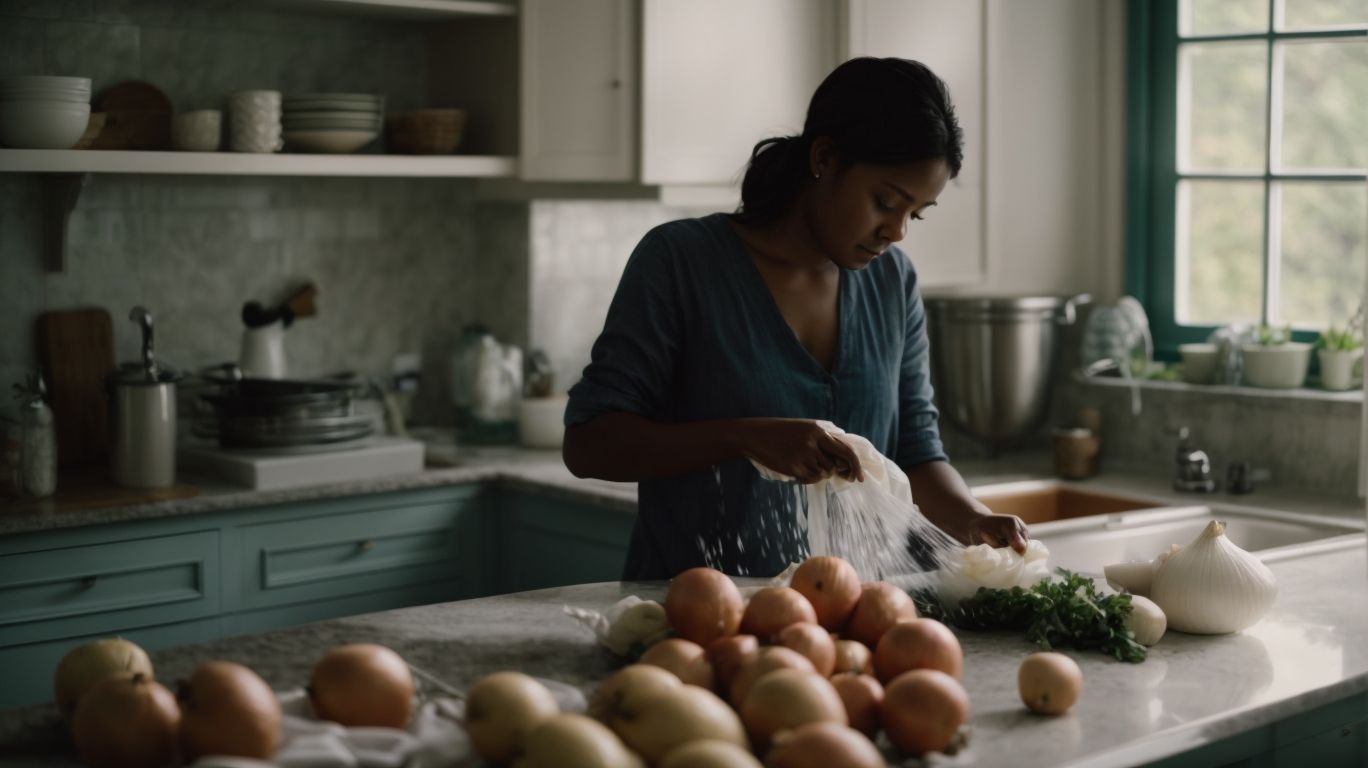
Credits: Poormet.Com – Jerry Robinson
Properly preparing turnips for cooking is crucial to enhance their flavor and texture in various culinary preparations.
How to Wash and Peel Turnips?
Before cooking, wash turnips thoroughly under running water, scrubbing gently to remove any dirt, and peel them using a vegetable peeler for a cleaner appearance.
After rinsing the turnips, it’s important to trim off any blemishes or rough spots with a knife to ensure a smooth texture. Once peeled, slice the turnips according to your desired shape, whether that’s cubes, strips, or rounds.
- For enhanced flavor, consider soaking the sliced turnips in a bowl of cold water for a few minutes to reduce their bitterness.
- Remember to dry the turnips thoroughly with a clean kitchen towel or paper towels before using them in your recipes to prevent excess moisture.
- Properly disposing of the turnip peels and scraps in the compost bin or garbage will help maintain cleanliness in your kitchen workspace.
What Parts of Turnips Are Edible?
Both the root and greens of turnips are edible, with the roots commonly used in cooking dishes, while the greens can be prepared similarly to other leafy greens like spinach or kale.
In terms of the root, turnips are incredibly versatile. They can be roasted to bring out their natural sweetness, mashed for a creamy side dish, or added to stews and soups for a hearty flavor. In addition, turnip greens offer a unique peppery taste that pairs well with garlic and olive oil, making them a delicious sautéed side dish or a nutritious addition to soups and stir-fries.
Turnips are not only a culinary delight but also a nutritional powerhouse. Rich in essential vitamins and minerals, turnips are low in calories and high in fiber, making them a great choice for weight management and overall health. The roots are a good source of Vitamin C, while the greens provide an abundance of Vitamin K and calcium.
How to Cut Turnips for Different Dishes?
When preparing turnips for different dishes, consider slicing them into rounds, dicing them for soups and stews, or julienning them for salads to suit various culinary applications.
One of the key factors to keep in mind while cutting turnips is their density; as they tend to be quite firm, using a sharp knife will help achieve clean cuts.
Experimenting with different shapes and sizes can add visual appeal to your dishes, whether you opt for thick rounds for roasting or finely julienned pieces for garnishing.
For round slices, ensure a steady hand and consistent thickness to promote even cooking throughout.
Dicing turnips works well for dishes like hearty stews, where uniformity in size is essential to ensure even cooking.
Julienning, on the other hand, involves cutting the turnip into thin matchstick-like pieces, ideal for adding a crunchy texture to salads and slaws.
Cooking Techniques for Turnips
Mastering various cooking techniques for turnips allows you to showcase their flavors and textures in diverse culinary creations.
Boiling Turnips
Boiling turnips is a simple and effective method to soften them for mashing, pureeing, or incorporating into soups and stews.
When boiling turnips, it’s crucial to peel and chop them into uniform pieces, ensuring even cooking throughout. Place the turnip pieces in a pot and cover them with water – a ratio of roughly 1 inch over the top of the pieces works well. Bring the water to a gentle boil, then reduce the heat and let the turnips simmer for around 15-20 minutes until tender. For added flavor, consider seasoning the water with salt, pepper, garlic, or herbs like thyme or rosemary. These seasonings infuse the turnips with a delicious taste as they cook.
Roasting Turnips
Roasting turnips with olive oil, salt, and pepper enhances their natural sweetness and caramelizes the edges for a delicious side dish or snack.
Preheat your oven to 400°F (200°C) and prepare the turnips by peeling and cutting them into uniform pieces for even cooking. Place the turnip wedges on a baking sheet lined with parchment paper, ensuring they are not overcrowded to allow them to roast properly. Drizzle with olive oil, sprinkle with salt, pepper, and a touch of rosemary for a fragrant herb addition. Roast the turnips for about 25-30 minutes, flipping them halfway through, until they are tender and golden brown. Serve the roasted turnips alongside a main dish, or enjoy them as a healthy standalone snack.
Sautéing Turnips
Sautéing turnips in butter and herbs creates a savory and tender dish that complements main courses and adds depth to vegetable medleys.
When sautéing turnips, it’s essential to heat the butter in a pan until it sizzles slightly. This ensures a good sear on the turnips and helps them cook evenly and develop a caramelized flavor. You can enhance the earthy taste of turnips by adding fresh herbs such as rosemary, thyme, or parsley.
For optimal flavor development, keep the turnips moving in the pan to prevent burning and ensure even cooking. The cooking time may vary depending on the size of the turnip cubes, but generally, it takes around 8-10 minutes for them to become tender yet still slightly crunchy.
Steaming Turnips
Steaming turnips preserves their natural flavors and nutrients, creating a light and healthy side dish that pairs well with a variety of main courses.
When steaming turnips, it is important to cut them into uniform pieces to ensure even cooking. Typically, turnips require around 10-15 minutes of steaming to reach the desired tenderness while still maintaining their firmness. You can enhance the flavor of steamed turnips by adding fresh herbs such as thyme or rosemary, garlic, or a splash of lemon juice during the steaming process. These additions infuse the turnips with additional complexity and depth of flavor.
Recipes Using Turnips
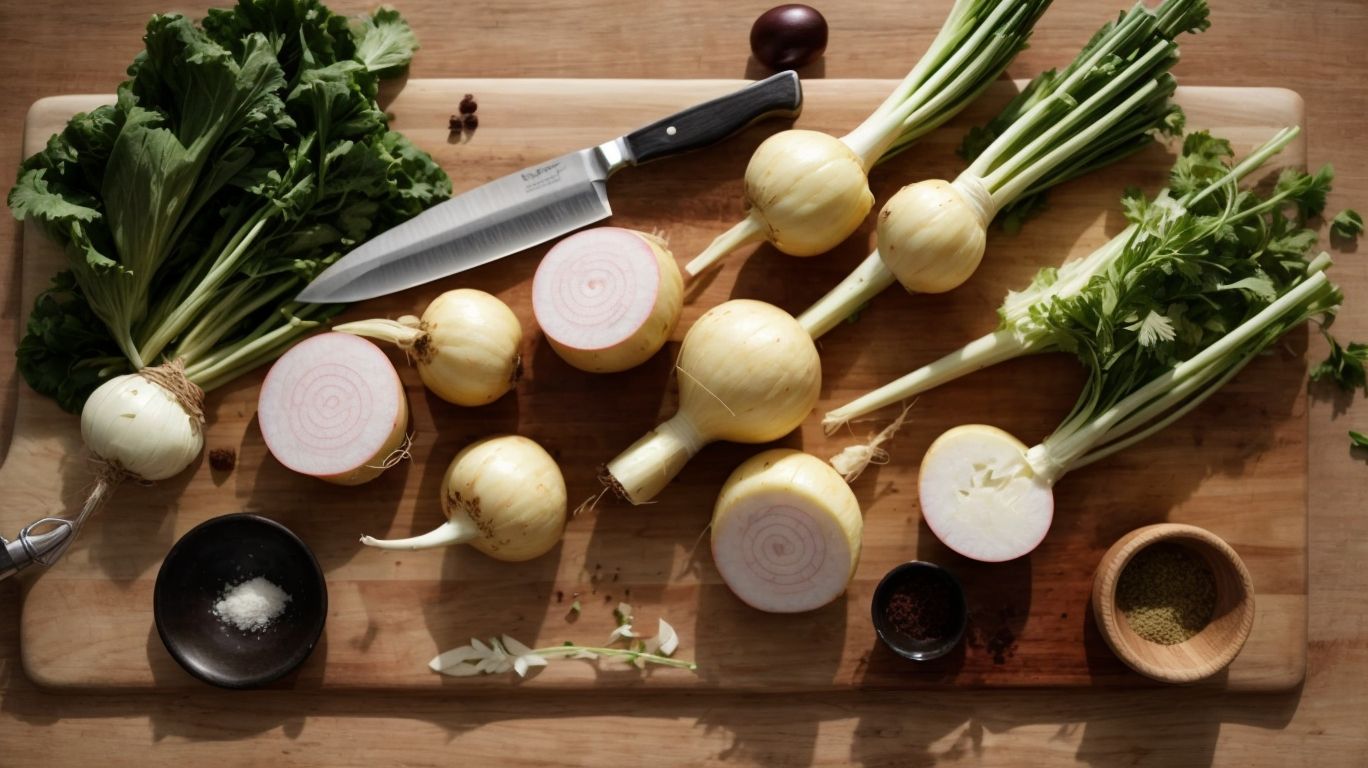
Credits: Poormet.Com – Michael Thomas
Exploring diverse recipes using turnips offers a creative culinary journey with endless possibilities for flavor combinations and dish innovations.
Turnip and Potato Mash
Combining turnips and potatoes in a creamy mash with butter and garlic yields a flavorful and comforting side dish that complements a variety of entrees.
For this delicious turnip and potato mash recipe, you will need approximately 4 medium-sized turnips and 3 large potatoes, peeled and diced into small chunks. Along with the main ingredients, gather 1/4 cup of butter, 2 cloves of garlic minced, salt, pepper, and a splash of milk for added creaminess.
To start, boil the turnips and potatoes in a pot of salted water until they are fork-tender, usually for about 15-20 minutes. Drain the vegetables and return them to the pot. Mash them together with a potato masher or fork until smooth.
Next, in a separate saucepan, melt the butter over low heat, then add in the minced garlic, letting it infuse into the butter for a minute. Pour this aromatic butter-garlic mixture into the mashed turnip and potato, and stir to combine.
Gradually add a little milk while stirring, until you reach your desired creamy consistency. Season with salt and pepper to taste, recalling that turnips can take up seasoning well.
Serve the turnip-potato mash warm as a side dish alongside roasted chicken, braised pork, or seared fish. This versatile dish adds a unique twist to traditional mashed potatoes and will surely impress your dinner guests.
Turnip Fries
Baked turnip fries seasoned with Parmesan and herbs offer a crispy and flavorful alternative to traditional potato fries, perfect for a guilt-free snack or side dish.
When preparing turnip fries, it’s crucial to slice the turnips into uniform pieces to ensure even baking. Be sure to peel the turnips and then cut them into thin strips or wedges, resembling the shape of regular fries.
For seasoning, you can get creative with a variety of options such as garlic powder, paprika, or even a sprinkle of rosemary for that extra burst of flavor.
Place the seasoned turnip fries on a baking sheet lined with parchment paper, ensuring they are not overcrowded to allow proper browning and crispiness during baking.
Bake the turnip fries in a preheated oven at 400°F for about 25-30 minutes, flipping halfway through, until they are golden brown and crispy.
As a delightful finishing touch, serve these delicious turnip fries with a side of tangy sriracha mayo or a creamy avocado dip for a truly satisfying serving experience.
Turnip and Carrot Soup
Crafting a hearty turnip and carrot soup with aromatic spices and creamy textures provides a comforting and nutritious meal option for all occasions.
Start by sautéing diced onions and garlic in olive oil until they are fragrant. Next, add chopped turnips and carrots, and allow them to cook until they start to soften.
- Pour in vegetable broth and bring the mixture to a gentle simmer.
- Season the soup with salt, pepper, a pinch of nutmeg, and a hint of cayenne for a delightful kick.
Once the vegetables are tender, blend the soup until smooth and velvety. Serve hot, garnished with a drizzle of coconut milk, a sprinkle of fresh parsley, and a dash of toasted pumpkin seeds for added crunch.
Turnip and Apple Salad
A refreshing turnip and apple salad dressed in a honey vinaigrette offers a harmonious blend of sweet, savory, and tangy flavors that brighten any meal.
Pairing the earthy richness of turnips with the crisp sweetness of apples creates a dynamic contrast that excites the palate. To make this delightful salad, thinly slice peeled turnips and apples, then mix them in a bowl for a colorful and crunchy base.
For the dressing, whisk together honey, apple cider vinegar, Dijon mustard, and a dash of olive oil until emulsified. Drizzle the dressing over the salad and toss gently to coat, allowing the flavors to meld.
For a finishing touch, sprinkle toasted walnuts or pecans for a nutty crunch, and some fresh parsley or mint leaves for a burst of herbaceousness. Serve this vibrant salad as a refreshing side dish alongside grilled chicken or roasted pork, or enjoy it on its own for a light and flavorful lunch.
Turnip and Beef Stew
Simmering turnips and beef in a rich broth with hearty vegetables and fragrant herbs creates a comforting and flavorful stew that satisfies the soul.
The first step in preparing this wholesome dish is to procure the freshest ingredients. Select vibrant turnips, succulent beef chunks, and a medley of colorful veggies like carrots, celery, and onions. These components will infuse the stew with depth and texture.
Next, sear the beef in a hot pan to lock in juices, enhancing the overall richness of the stew. Once browned, transfer the meat to a large pot, where it will slowly mingle with the other components, intensifying the flavors.
Tips for Cooking with Turnips
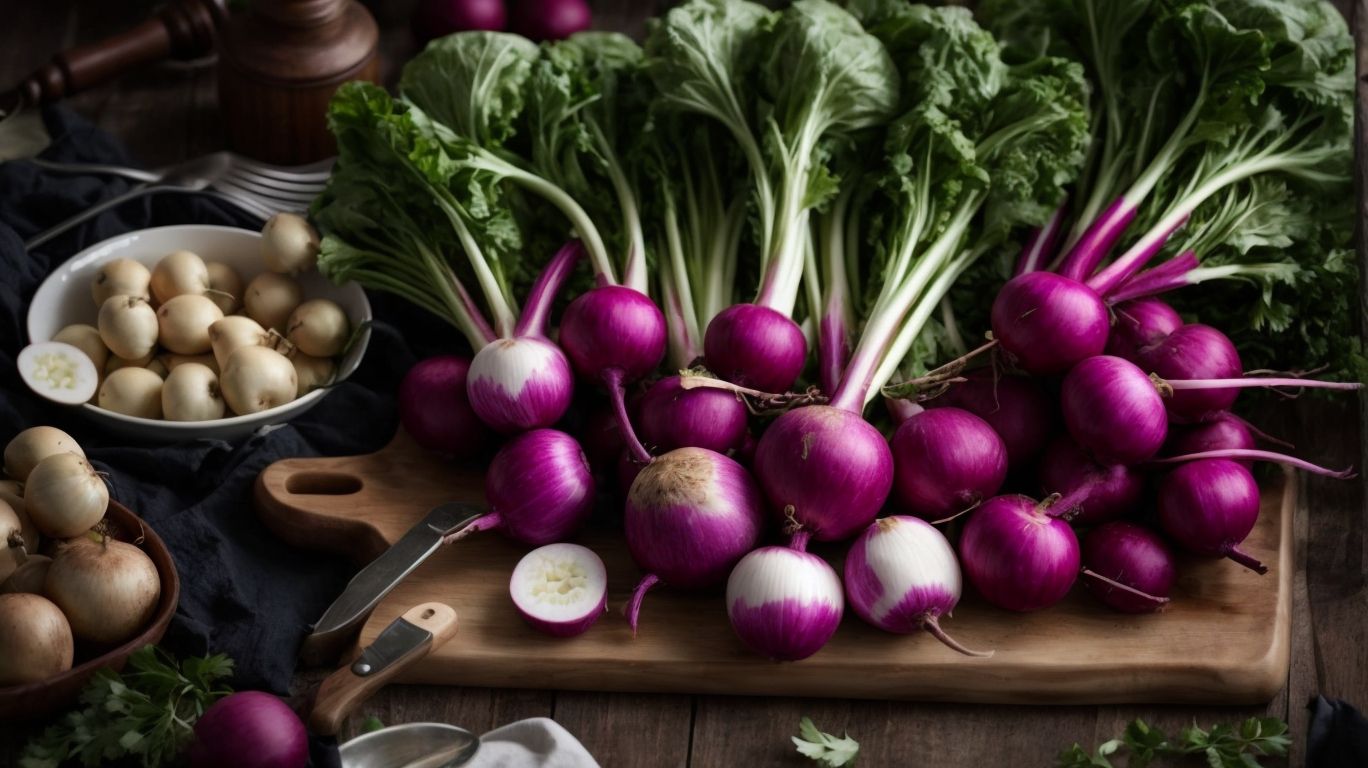
Credits: Poormet.Com – Juan Lopez
Enhancing the flavor profile of turnip dishes and addressing bitterness challenges can elevate your culinary creations to new heights.
How to Add Flavor to Turnip Dishes?
Infusing turnip dishes with aromatic herbs, spices, and savory ingredients like butter or Parmesan cheese can enhance their taste profile and appeal to a wider audience.
In terms of seasoning choices for turnip dishes, the possibilities are vast. Consider using traditional spices such as nutmeg, cinnamon, or cumin to add depth and warmth to your recipes. Another option is to experiment with fresh herbs like thyme, rosemary, or dill for a pop of freshness.
Pairing turnips with complementary ingredients is also key in creating flavorsome dishes. For instance, mixing roasted turnips with maple syrup or honey can introduce a delightful sweetness that balances the vegetable’s slight bitterness.
Culinary techniques play a crucial role in elevating the taste of turnips. Roasting them brings out their natural sweetness and caramelizes the edges, while sautéing with garlic and olive oil adds a rich, aromatic undertone.
How to Make Turnips Less Bitter?
To reduce the bitterness of turnips, consider soaking them in cold water before cooking, blanching them briefly, or balancing their flavors with sweet or acidic ingredients in recipes.
Soaking turnips in cold water is a simple yet effective method to draw out some of the bitter compounds. This can help soften the intensity of the bitterness. Blanching, on the other hand, involves quickly cooking the turnips in boiling water then plunging them into ice water, which can also reduce their bitterness while maintaining their texture intact.
In terms of flavor pairings, incorporating honey, maple syrup, or balsamic vinegar can counteract the bitter taste of turnips with their sweetness or acidity. Herbs like thyme, rosemary, or sage can also complement the flavor of turnips, enhancing their profile without the overpowering bitterness. Experimenting with various cooking methods like roasting, sautéing, or braising can further help in mellowing down the bitterness and highlighting the natural sweetness of turnips.
What Are Some Common Mistakes When Cooking with Turnips?
Common mistakes when cooking with turnips include overcooking, under-seasoning, or neglecting to balance their earthy flavors with complementary ingredients for a well-rounded dish.
One prevalent error is overcooking turnips, causing them to become mushy and lose their distinct texture. To avoid this, consider cutting them into uniform pieces to ensure even cooking, and closely monitor the cooking time to achieve a tender yet slightly crisp result.
Under-seasoning turnips can result in a bland dish. Remember to properly season with salt, pepper, and other herbs or spices to enhance their natural flavors. Experiment with different seasoning combinations to find what best complements the turnips.
Another common pitfall is neglecting to balance the earthy flavors of turnips with ingredients like citrus (such as lemon or orange zest), sweet additions like honey or maple syrup, or savory elements like bacon or garlic. These contrasts can elevate the overall taste profile of your dish.
Conclusion
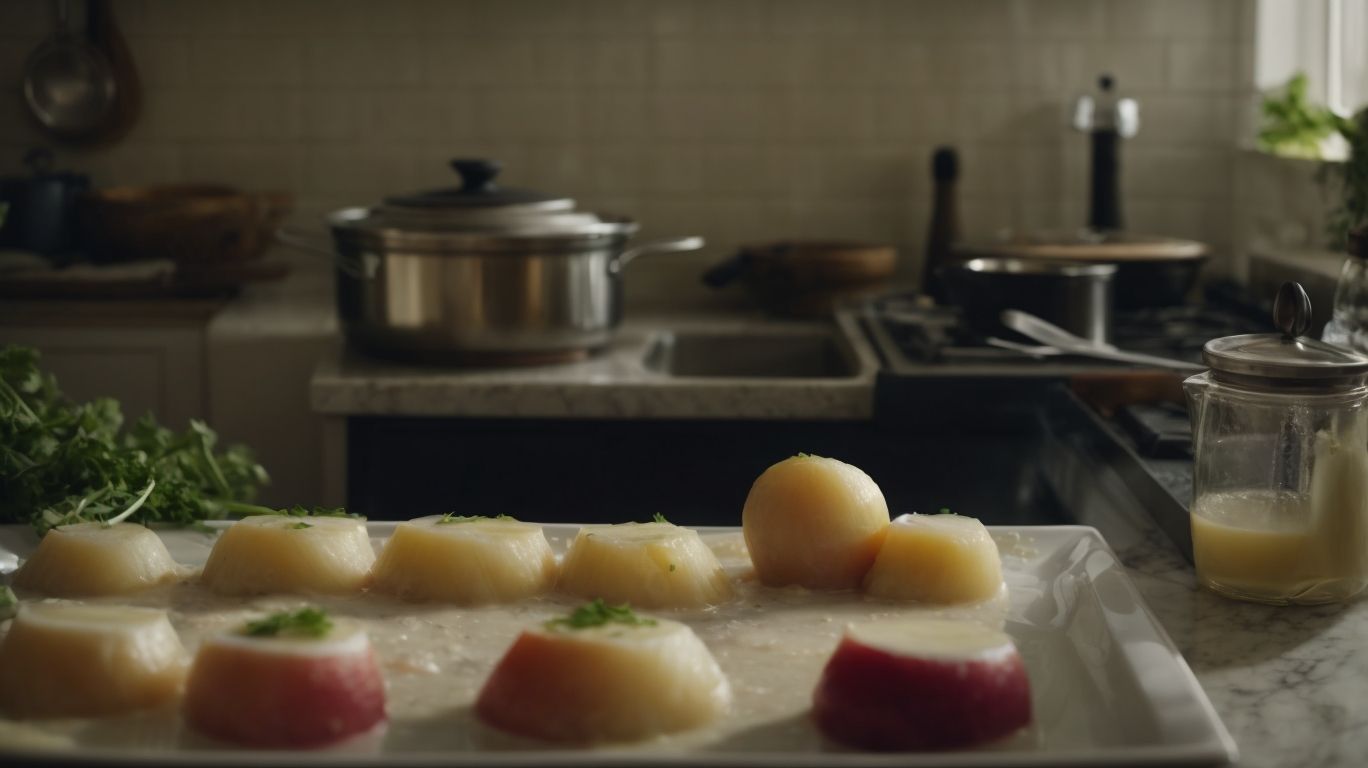
Credits: Poormet.Com – Tyler Moore
In conclusion, turnips offer a versatile canvas for culinary creativity, providing a range of flavors and textures that can elevate dishes across various cuisines.
These root vegetables can be enjoyed raw in salads for a crunchy bite or cooked in stews and soups to infuse a sweet and slightly peppery taste. Their adaptability shines in recipes like turnip gratin, where the turnips absorb flavors well and add a creamy texture when baked with cheese and cream. The greens of the turnip plant are rich in nutrients and can be used in sautés or as a flavorful garnish.
Frequently Asked Questions
What are some different ways to prepare turnips?
There are many delicious ways to cook with turnips! You can roast them, mash them, use them in soups or stews, or even make turnip fries. Get creative and try different methods to find your favorite way to cook with turnips.
Can turnips be eaten raw?
Yes, turnips can be eaten raw, but they are best enjoyed cooked. Raw turnips have a strong, bitter flavor that can be overpowering. Cooking them helps to mellow out their flavor and makes them more enjoyable to eat.
How do I store turnips?
Turnips can be stored in the refrigerator for up to two weeks. Cut off the greens and store them separately in a plastic bag. The greens will wilt quickly, but the turnip roots will stay fresh for longer.
How do I prepare turnips for cooking?
To prepare turnips, peel the skin with a vegetable peeler and trim off the ends. Then, depending on how you plan to cook them, you can chop them into cubes, slices, or leave them whole. Just be sure to wash them thoroughly before cooking.
What other ingredients go well with turnips?
Some great ingredients to pair with turnips include carrots, potatoes, onions, garlic, and herbs like thyme and rosemary. Turnips also go well with meats like pork, beef, and chicken, making them a versatile and flavorful addition to many dishes.
Can I freeze turnips?
Yes, you can freeze turnips, but they may become a bit mushy when thawed. To freeze turnips, blanch them first in boiling water for 2-3 minutes, then shock them in ice water. Drain, dry, and store them in an airtight container or freezer bag for up to three months.

